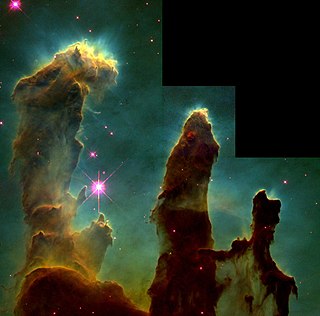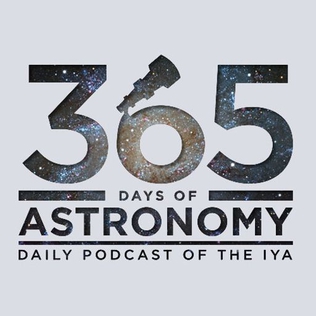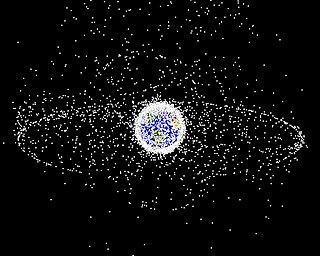
An astronomer is a scientist in the field of astronomy who focuses their studies on a specific question or field outside the scope of Earth. They observe astronomical objects such as stars, planets, moons, comets and galaxies – in either observational or theoretical astronomy. Examples of topics or fields astronomers study include planetary science, solar astronomy, the origin or evolution of stars, or the formation of galaxies. A related but distinct subject is physical cosmology, which studies the Universe as a whole.

Amateur astronomy is a hobby where participants enjoy observing or imaging celestial objects in the sky using the unaided eye, binoculars, or telescopes. Even though scientific research may not be their primary goal, some amateur astronomers make contributions in doing citizen science, such as by monitoring variable stars, double stars, sunspots, or occultations of stars by the Moon or asteroids, or by discovering transient astronomical events, such as comets, galactic novae or supernovae in other galaxies.

A space telescope or space observatory is a telescope in outer space used to observe astronomical objects. Suggested by Lyman Spitzer in 1946, the first operational telescopes were the American Orbiting Astronomical Observatory, OAO-2 launched in 1968, and the Soviet Orion 1 ultraviolet telescope aboard space station Salyut 1 in 1971. Space telescopes avoid the filtering and distortion (scintillation) of electromagnetic radiation which they observe, and avoid light pollution which ground-based observatories encounter. They are divided into two types: Satellites which map the entire sky, and satellites which focus on selected astronomical objects or parts of the sky and beyond. Space telescopes are distinct from Earth imaging satellites, which point toward Earth for satellite imaging, applied for weather analysis, espionage, and other types of information gathering.

An astronomical object, celestial object, stellar object or heavenly body is a naturally occurring physical entity, association, or structure that exists within the observable universe. In astronomy, the terms object and body are often used interchangeably. However, an astronomical body or celestial body is a single, tightly bound, contiguous entity, while an astronomical or celestial object is a complex, less cohesively bound structure, which may consist of multiple bodies or even other objects with substructures.

Observational astronomy is a division of astronomy that is concerned with recording data about the observable universe, in contrast with theoretical astronomy, which is mainly concerned with calculating the measurable implications of physical models. It is the practice and study of observing celestial objects with the use of telescopes and other astronomical instruments.

Associated Universities, Inc. (AUI) is a research management corporation that builds and operates facilities for the research community. It is a not-for-profit 501(c)(3) corporation headquartered in Washington, D.C., United States. The current president is Adam Cohen. The corporation's major current operating unit is the National Radio Astronomy Observatory, which it operates under a Cooperative Agreement with the National Science Foundation.
The Royal Astronomical Society of Canada (RASC) is a national, non-profit, charitable organization devoted to the advancement of astronomy and related sciences. At present, there are 30 local branches of the Society, called Centres, in towns and cities across the country from St. John's, Newfoundland, to Victoria, British Columbia, and as far north as Whitehorse, Yukon. There are about 5100 members from coast to coast to coast, and internationally. The membership is composed primarily of amateur astronomers and also includes numerous professional astronomers and astronomy educators. The RASC is the Canadian equivalent of the British Astronomical Association.

The International Year of Astronomy (IYA2009) was a year-long celebration of astronomy that took place in 2009 to coincide with the 400th anniversary of the first recorded astronomical observations with a telescope by Galileo Galilei and the publication of Johannes Kepler's Astronomia nova in the 17th century. The Year was declared by the 62nd General Assembly of the United Nations. A global scheme, laid out by the International Astronomical Union (IAU), was also endorsed by UNESCO, the UN body responsible for educational, scientific, and cultural matters.
Michael W. Carroll is an astronomical artist and science writer. His art has appeared in magazines such as TIME, National Geographic, and Astronomy, and has flown aboard the Russian space station Mir and NASA's Phoenix Mars lander. He is also a founding member of the International Association of Astronomical Artists.

"Space art" is the term for a genre of modern artistic expression that strives to show the wonders of the Universe. Like other genres, space art has many facets and encompasses realism, impressionism, hardware art, sculpture, abstract imagery, even zoological art. Though artists have been making art with astronomical elements for a long time, the genre of space art itself is still in its infancy, having begun only when humanity gained the ability to look off our world and artistically depicted what we see out there. Whatever the stylistic path, the artist is generally attempting to communicate ideas somehow related to space, often including an appreciation of the infinite variety and vastness which surrounds us. In some cases, artists who consider themselves space artists use more than illustration and painting to communicate scientific discoveries or works depicting space, some have had the opportunity to work directly with space flight technology and scientists in attempts to expand the arts, humanities, and cultural expression relative to space exploration.

The Fabric Workshop and Museum, located in Philadelphia, Pennsylvania, United States, is a non-profit arts organization devoted to creating new work in new materials and new media in collaboration with emerging, nationally, and internationally recognized artists.
Don Dixon is an American astronomical artist practicing space art in the tradition of Chesley Bonestell.

The San Jose Museum of Quilts & Textiles is an art museum in Downtown San Jose, California, USA. Founded in 1977, the museum is the first in the United States devoted solely to quilts and textiles as an art form. Holdings include a permanent collection of over 1,000 quilts, garments and ethnic textiles, emphasizing artists of the 20th- and 21st-century, and a research library with over 500 books concerning the history and techniques of the craft.

Optics Valley is Arizona’s business cluster for the optics, photonics, and astronomy industries. With over 100 member organizations, Optics Valley's mission is to catalyze, convene and connect optics, photonics, astronomy and supporting business interests throughout Arizona. As part of the Arizona Technology Council, Optics Valley is one of the leading optics clusters in the world. The majority of the members are located in and around Tucson where they are close to the University of Arizona’s Wyant College of Optical Sciences, which is known for its world leadership in optics education and research. In addition, Steward Observatory is a world leader in astronomy.

365 Days of Astronomy is an educational podcast, inspired by the International Year of Astronomy, published daily beginning in 2009. It is produced as a collaboration between Southern Illinois University Edwardsville and Astrosphere New Media Association. The individual episodes are written, recorded, and produced by people all around the world. The podcast had 3,000–10,000 listeners each day.
Tulipamwe means "we are together" and is an independently funded artists project coordinated by the Tulipamwe Arts Trust in Namibia. The trust is organized under the auspices of the Visual & Performing Arts Department of the University of Namibia and is affiliated to the Triangle Network of Workshops initiated by Sir Robert Lauder.

Human presence in space is about humanity in space, particularly about all anthropogenic presence in space and human activity in space, that is in outer space and in a broader sense also on any extraterrestrial astronomical body.

William J. (Bill) Borucki is a space scientist who worked at the NASA Ames Research Center. Upon joining NASA in 1962, Borucki joined the group conducting research on the heat shield for Apollo program spacecraft. He later turned his attention to the optical efficiency of lightning strikes in the atmospheres of planets, investigating the propensity that these lightning strikes could create molecules that would later become the precursors for life. Subsequently, Borucki's attention turned to extrasolar planets and their detection, particularly through the transit method. In light of this work, Borucki was named the principal investigator for NASA's Kepler mission, launched on March 6, 2009 and dedicated to a transit-based search for habitable planets. In 2013, Borucki was awarded the United States National Academy of Sciences's Henry Draper Medal for his work with Kepler. In 2015 he received the Shaw Prize in Astronomy.
A satellite internet constellation is a constellation of artificial satellites providing satellite internet service. In particular, the term has come to refer to a new generation of very large constellations orbiting in low Earth orbit (LEO) to provide low-latency, high bandwidth (broadband) internet service.













